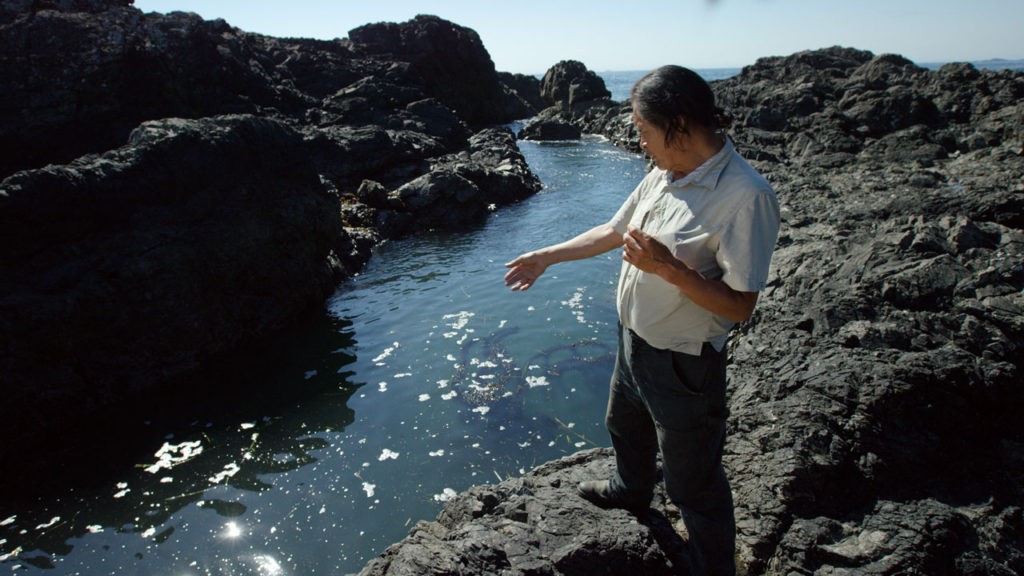
31 Oct Looking to the past to learn how communities can thrive for hundreds of years to come
Biosphere reserves are places recognized by the United Nations as areas of ecological significance that promote solutions reconciling the conservation of biodiversity with its sustainable use. In episode 2 of the documentary “Striking Balance,” viewers are introduced to the Clayoquot Sound Biosphere Reserve, located on the west coast of Vancouver Island in British Columbia. The reserve is 350,000 HA and contains some of the largest intact coastal temperate rain forests in North America. The region is home to 5,000 people and more than 80 species at risk.
The Tla-o-qui-aht, Ahousaht, Hesquiaht, To-quaht and Yuu-cluth-aht, members of the Nuu-chah-nulth group of nations, have called this region home for thousands of years. In order to support their community and ensure resources for future generations the Nuu-chah-nulth relied on a complex governance system consisting of a Ta’ii ha’wiih (Territory chief) at the top and managers responsible for different tracks of forest, rivers, fisheries and streams. These roles where hereditary and the knowledge of one generation was passed down to the next. Research has shown that the resource management practiced by the Nuu-chah-nulth was sustainable for at least 1,000 years. However, in the late 1800’s, the reserve system, residential schools, disease, and the Indian Act led to a shift in how resources were managed in Clayoquot Sound. Traditional sustainable practices exercised by the Nuu-chah-nulth were replaced with unsustainable industrial ones. This resulted in the destruction of salmon habitat, ecosystems and the decimation of whale populations.
In 1984 preparations were being made to harvest 90% of the timber on Meares Island, which contained the largest old growth forests in Clayoquot Sound. The Tla-o-qui-aht, who call the island home, decided to prevent the logging of Meares Island by declaring it a tribal park. Through a subsequent court case they where declared the rightful owners of the land, negating the logging company’s timber licence. However, the rest of Clayoquot Sound was not so fortunate and was subject to intense clear cut logging. This logging was heavily protested by First Nations and environmental groups in what became known as “The war in the woods”. These protests forced government action and in 1995 the government declared that logging in Clayoquot Sound could only be conducted if the recommendations of a scientific panel (which consisted of First Nation ha’wiih and knowledgeable elders) were followed. In 2000 through the efforts of the local community, UNESCO declared Clayoquot Sound a Biosphere Reserve.
Since becoming a biosphere reserve, the Clayoquot Sound community has worked to restore the ecosystem decimated by unsustainable resource use. The traditional management system practiced by the Nuu-chah-nulth is being re-introduced. A biosphere reserve trust has been established to help restore the regions streams, salmon populations and encourage sustainable livelihoods.
For more information on the Clayoquot Sound Biosphere Reserve enjoy Episode 2 of “Striking Balance”.
The featured image shows Joe Martin, Tla-o-qui-aht First Nation, master canoe carver. Credit for the featured image goes to Striking Balance.


